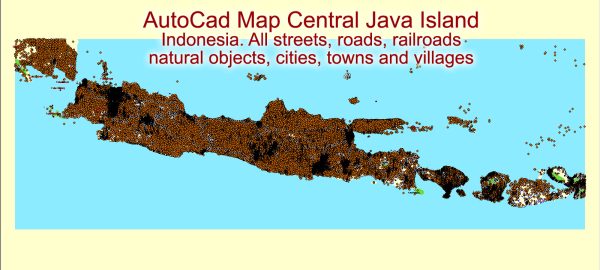Java, Indonesia, is the most populous island in the world and a significant economic and cultural hub for the country. As such, it has a well-developed transportation infrastructure, including both maritime and air transportation.
Maritime Transportation:
- Ports:
- Tanjung Priok: Located in Jakarta, Tanjung Priok is Indonesia’s largest and busiest seaport. It serves as a crucial gateway for international trade and domestic shipping.
- Surabaya Port: Situated in East Java, it is the second-largest port in Indonesia, playing a vital role in the nation’s trade activities.
- Shipping Routes:
- Java is surrounded by several seas, including the Java Sea, Bali Sea, and Sunda Strait. These waterways are crucial for maritime transportation, facilitating the movement of goods between Java and other Indonesian islands.
- Ferries:
- Ferries connect Java to neighboring islands like Sumatra and Bali. These are essential for both passenger and cargo transportation.
- Fishing Industry:
- The coastal areas of Java support a vibrant fishing industry, contributing to both domestic consumption and export.
Air Transportation:
- Airports:
- Soekarno-Hatta International Airport (CGK): Located in Jakarta, it is Indonesia’s busiest airport and a major international gateway.
- Juanda International Airport (SUB): Situated in Surabaya, it is another key international airport serving East Java.
- Adisutjipto International Airport (JOG): Located in Yogyakarta, it serves the central part of Java.
- Domestic and International Flights:
- These airports facilitate a large number of domestic flights connecting Java with other Indonesian islands. Additionally, major airports provide international flights connecting Java to various countries.
- Airline Industry:
- Indonesia has a well-established airline industry with both full-service and low-cost carriers operating domestic and international routes.
- Air Cargo:
- Air transportation plays a crucial role in the movement of high-value and time-sensitive goods. Cargo facilities at major airports handle the transportation of goods by air.
- Infrastructure Development:
- The Indonesian government continues to invest in the expansion and improvement of airport infrastructure to accommodate the growing demand for air travel.
Challenges and Future Developments:
- Infrastructure Upgrades:
- Ongoing efforts are focused on upgrading and expanding both maritime and air transportation infrastructure to cope with the increasing demand.
- Traffic Congestion:
- Traffic congestion, particularly in major cities like Jakarta, poses challenges for both maritime and air transportation. Efforts are being made to address these issues through urban planning and improved traffic management.
- Sustainable Transportation:
- There is a growing emphasis on sustainability in transportation, with initiatives to promote cleaner and more environmentally friendly modes of transport.
In summary, Java’s maritime and air transportation systems are crucial for the economic development of Indonesia, facilitating trade, tourism, and connectivity within the archipelago and beyond. Ongoing investments and developments aim to enhance the efficiency, capacity, and sustainability of these transportation networks.


 Author: Kirill Shrayber, Ph.D.
Author: Kirill Shrayber, Ph.D.